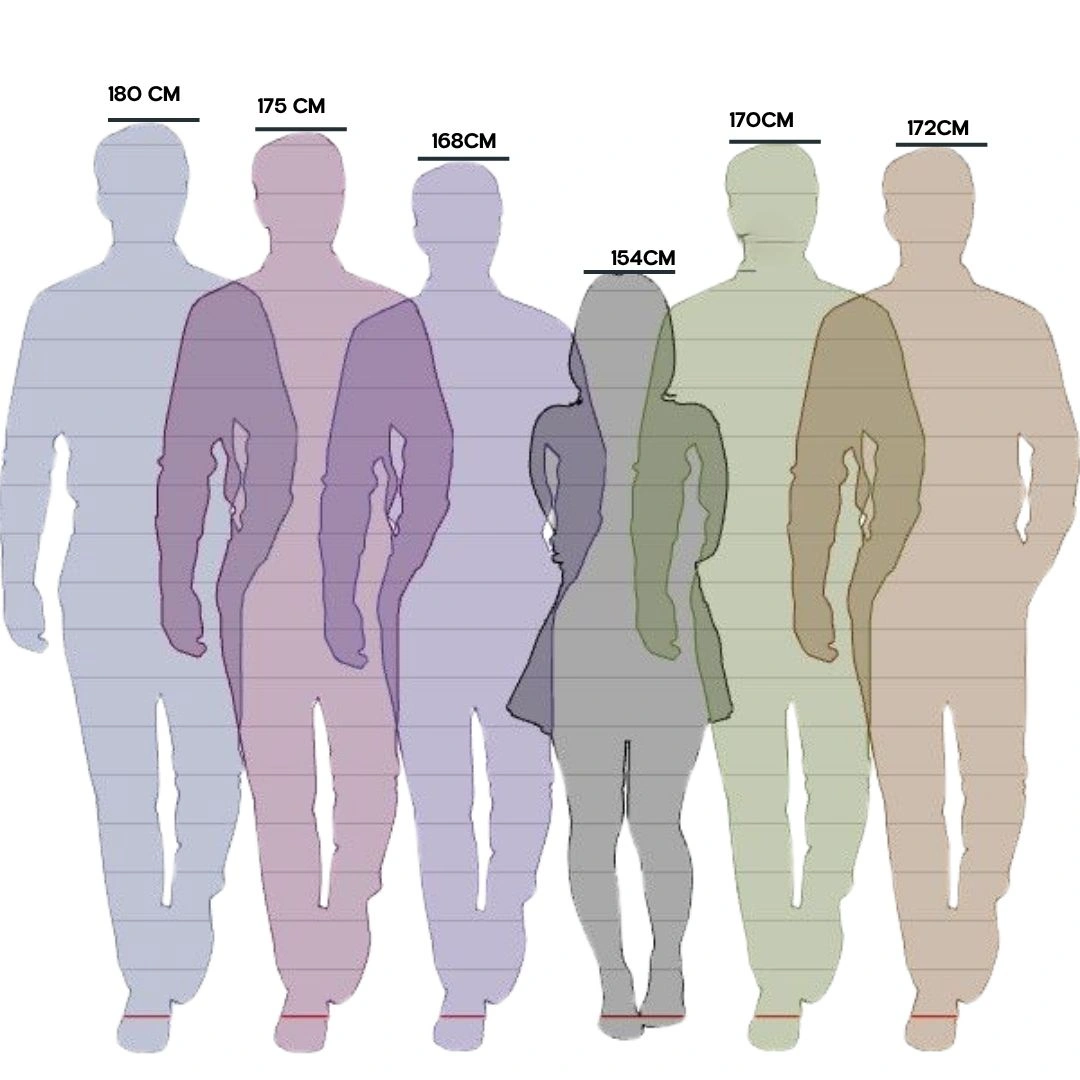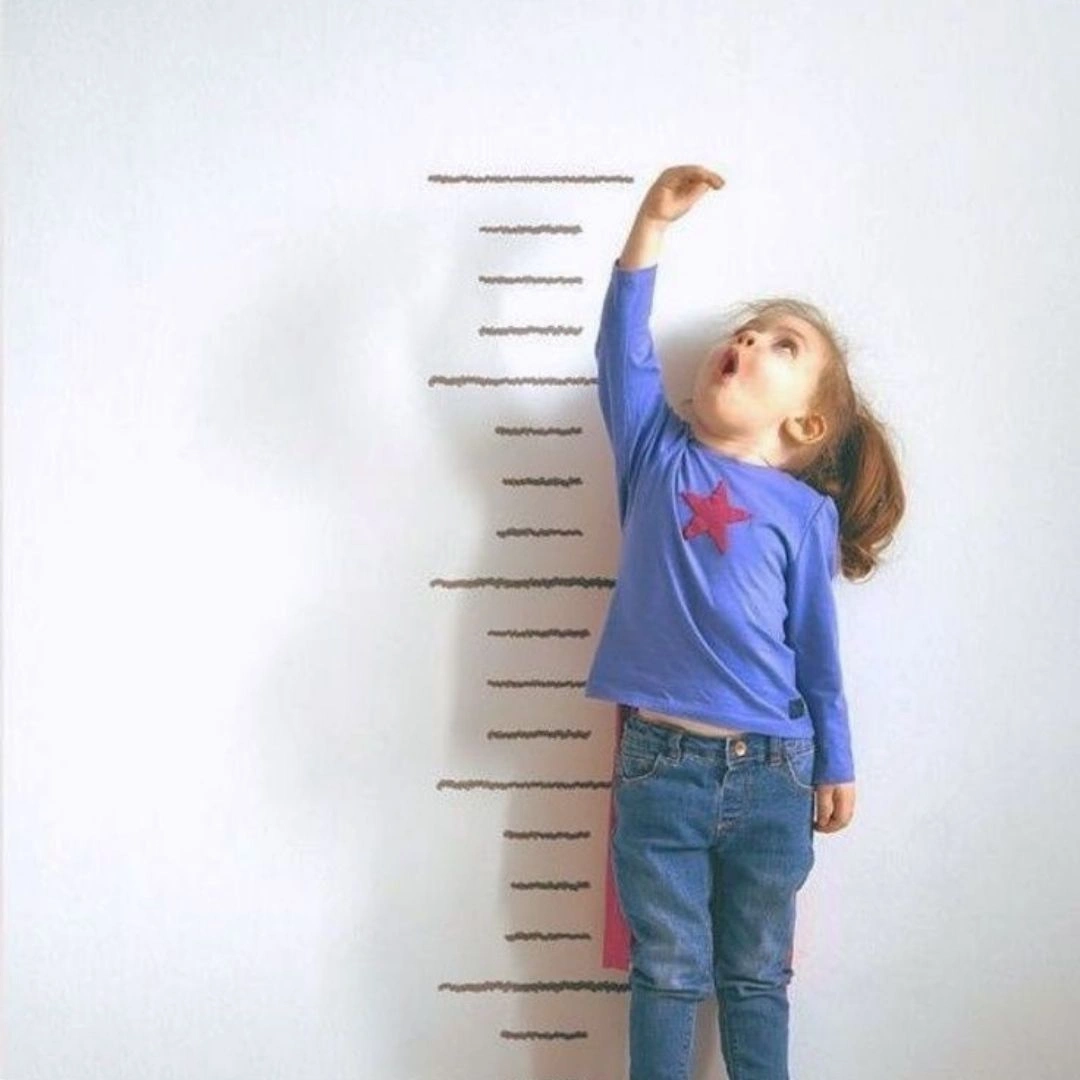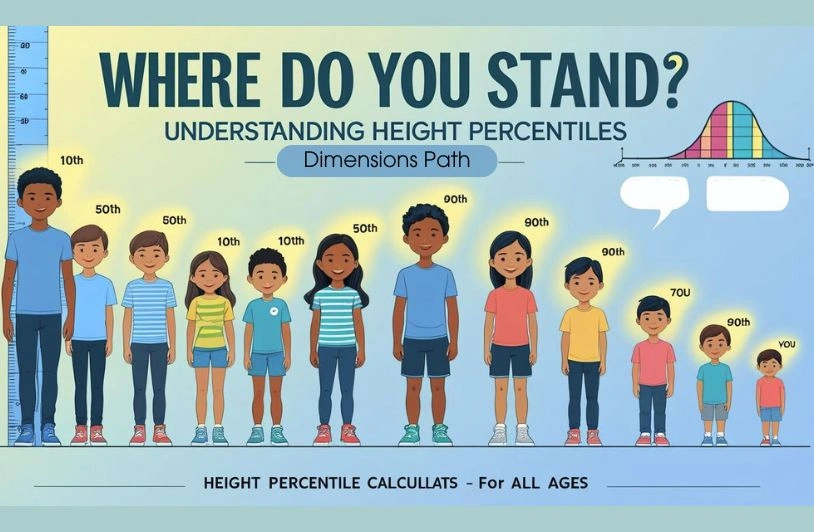Understanding Your Height: A Complete Height Percentile Calculator Reference
Standing in a crowd, have you ever wondered where you fit in terms of height? Whether you’re the tallest person in your friend group or feel like everyone towers over you, understanding your position in the height spectrum can be both fascinating and informative. The concept of What is My Height Percentile and Height Percentiles by Age has become increasingly important in medical assessments, personal fitness tracking, and general health awareness.
Height percentiles represent a statistical measurement that shows where your height falls compared to others of the same age and gender. This measurement system helps doctors, parents, and individuals understand growth patterns and identify potential health concerns. A Height Percentile Calculator serves as a valuable tool that transforms raw height measurements into meaningful percentile rankings, making it easier to interpret where you stand among your peers.
The significance of height percentiles extends beyond mere curiosity. Medical professionals use these measurements to track child development, identify growth disorders, and assess overall health status. For adults, understanding height percentiles can provide insights into genetic factors, nutritional history, and regional variations in human growth patterns.
What is a Height Percentile Calculator?
A Height Percentile Calculator is a specialized tool that compares your height measurements against standardized growth charts and population data. These calculators use extensive databases containing height information from thousands of individuals across different age groups, genders, and sometimes ethnic backgrounds to determine where your height falls within the general population.
When you input your height into a Height Percentile Calculator, the system processes this information against established percentile charts. For instance, if your height falls in the 75th percentile, this means you are taller than 75% of people in your demographic group and shorter than 25%. This statistical approach provides a clear, numerical representation of your height relative to others.
The calculation process involves complex statistical analysis that considers multiple factors including age, gender, and sometimes geographic location. Modern Height Percentile Calculator tools have become increasingly sophisticated, incorporating data from various countries and populations to provide more accurate and representative results.
These calculators prove particularly valuable for parents monitoring their children’s growth, healthcare providers assessing patient development, and individuals curious about their physical characteristics compared to population norms. The accessibility of online Height Percentile Calculator tools has made this information readily available to anyone interested in understanding their height statistics.
Understanding Height Percentile Basics
Height Percentile represents a statistical measure that indicates the percentage of people in a specific population who are shorter than a given height. This measurement system follows a bell curve distribution, where most people fall within the middle percentiles, while fewer individuals occupy the extreme high or low percentiles.
The percentile system ranges from 0 to 100, with the 50th percentile representing the median or average height for a particular group. Heights below the 50th percentile indicate below-average height, while measurements above this mark suggest above-average height. Understanding these basics helps interpret Height Percentile Calculator results more effectively.

Height Percentile Ranges and Interpretations
To better understand how Height Percentile Calculator results should be interpreted, the following table provides a comprehensive breakdown of percentile ranges and their meanings:
| Percentile Range | Classification | Population Percentage | Interpretation | Medical Significance |
|---|---|---|---|---|
| 95th – 100th | Very Tall | Top 5% | Exceptionally tall for age/gender | May warrant growth assessment |
| 85th – 94th | Above Average | 10% | Taller than most peers | Generally normal variation |
| 75th – 84th | Moderately Tall | 10% | Above average height | Typical healthy range |
| 25th – 74th | Average Range | 50% | Normal height range | Standard healthy range |
| 15th – 24th | Moderately Short | 10% | Below average height | Typical healthy range |
| 5th – 14th | Below Average | 10% | Shorter than most peers | Generally normal variation |
| 0th – 4th | Very Short | Bottom 5% | Exceptionally short for age/gender | May warrant growth assessment |
Different percentile ranges carry varying significance in medical and statistical contexts. Heights falling between the 25th and 75th percentiles are generally considered within the normal range for most populations. Measurements below the 10th percentile or above the 90th percentile may warrant additional attention, particularly in pediatric growth monitoring.
The concept of Height Percentile becomes more complex when considering factors such as genetic background, nutritional status, and environmental influences. These variables can significantly impact an individual’s height development and their position within percentile rankings.
How Height Percentile Calculator Tools Work
Modern Height Percentile Calculator systems operate using sophisticated algorithms that process input data against comprehensive databases of height measurements. These tools typically require users to input their height, age, and gender to generate accurate percentile rankings.
The underlying databases used by Height Percentile Calculator tools contain millions of height measurements collected from various populations over extended periods. This extensive data collection ensures that percentile calculations reflect current population characteristics and trends in human growth patterns.
Many Height Percentile Calculator applications incorporate additional features such as growth tracking, historical data storage, and comparative analysis across different time periods. These enhanced capabilities make these tools valuable for long-term health monitoring and growth assessment.
The accuracy of Height Percentile Calculator results depends heavily on the quality and representativeness of the underlying data. Reputable calculators use data from established health organizations, government surveys, and peer-reviewed research studies to ensure reliable percentile calculations.
Adult Height Percentiles Explained
Adult Height Percentiles represent the final outcome of growth and development processes, typically stabilizing after the completion of puberty. These percentiles provide valuable insights into how adult heights compare across different populations and demographic groups.
Understanding Adult Height Percentiles requires recognizing that adult height represents the culmination of numerous factors including genetics, nutrition, health status, and environmental conditions during growth years. These percentiles remain relatively stable throughout adult life, making them reliable indicators for comparative analysis.
Adult Height Percentiles vary significantly across different countries and ethnic groups, reflecting the complex interplay of genetic and environmental factors that influence human growth. A Height Percentile Calculator designed for adults must account for these variations to provide accurate and meaningful results.
The distribution of Adult Height Percentiles typically follows predictable patterns, with most individuals clustering around the median height and fewer people occupying the extreme percentiles. This distribution pattern helps healthcare providers and researchers understand population characteristics and identify potential health implications.
Height Percentile Calculator for Adults: Special Considerations
A Height Percentile Calculator for Adults must account for unique factors that distinguish adult height assessment from pediatric growth monitoring. Adult height percentiles remain relatively constant throughout life, making them useful for population studies and health assessments.
When using a Height Percentile Calculator for Adults, it’s important to understand that results reflect your height relative to other adults in similar demographic categories. These calculations don’t predict future height changes, as adult height typically remains stable barring significant health issues.
Height Percentile Calculator for Adults tools often incorporate additional features such as BMI calculations, health risk assessments, and comparative analysis across different age groups within the adult population. These expanded capabilities provide more comprehensive health insights beyond simple height percentiles.
The accuracy of Height Percentile Calculator for Adults results depends on using appropriate reference populations that match your demographic characteristics. Some calculators allow users to select specific ethnic or geographic reference groups for more precise percentile calculations.
What is the Average Height Around the World
What is the Average Height varies dramatically across different countries, ethnic groups, and time periods, reflecting the complex interplay of genetic, nutritional, and environmental factors that influence human growth. Understanding these variations provides context for interpreting Height Percentile Calculator results.
Global height averages have changed significantly over the past century, with many populations experiencing increases in average height due to improved nutrition, healthcare, and living conditions. These changes affect how Height Percentile Calculator tools interpret historical data and project future trends.
What is the Average Height in developed countries typically ranges higher than in developing nations, though these gaps have been narrowing as global health and nutrition standards improve. This information helps contextualize individual height percentiles within broader global patterns.
Regional variations in What is the Average Height reflect both genetic predispositions and environmental factors such as diet, climate, and healthcare access. A comprehensive Height Percentile Calculator should account for these regional differences to provide accurate percentile rankings.
Average Height Countries: Global Comparisons
Average Height Countries rankings reveal fascinating patterns in human growth and development across different populations and geographic regions. These comparisons provide valuable context for understanding how local height percentiles relate to global standards.
Northern European countries consistently rank among the tallest Average Height Countries, with nations like the Netherlands, Denmark, and Norway leading global height statistics. These countries demonstrate how factors such as genetics, nutrition, and healthcare contribute to population height characteristics.

Global Average Height by Country
The following table presents the Average Height Countries data, showing how different nations compare in terms of adult height measurements:
| Country | Average Male Height (cm) | Average Female Height (cm) | Average Male Height (ft/in) | Average Female Height (ft/in) |
|---|---|---|---|---|
| Netherlands | 183.8 | 170.4 | 6’0″ | 5’7″ |
| Denmark | 182.6 | 169.8 | 6’0″ | 5’7″ |
| Norway | 182.4 | 168.8 | 6’0″ | 5’6″ |
| Germany | 181.0 | 167.0 | 5’11” | 5’6″ |
| Sweden | 180.5 | 166.8 | 5’11” | 5’6″ |
| Finland | 180.2 | 166.2 | 5’11” | 5’5″ |
| United States | 177.1 | 163.5 | 5’10” | 5’4″ |
| United Kingdom | 177.5 | 163.2 | 5’10” | 5’4″ |
| Canada | 177.9 | 163.9 | 5’10” | 5’4″ |
| Australia | 178.4 | 164.1 | 5’10” | 5’5″ |
| Japan | 172.0 | 158.0 | 5’8″ | 5’2″ |
| China | 171.8 | 159.8 | 5’8″ | 5’3″ |
| India | 166.3 | 152.6 | 5’5″ | 5’0″ |
| Brazil | 173.6 | 160.9 | 5’8″ | 5’3″ |
| Mexico | 170.2 | 157.1 | 5’7″ | 5’2″ |
The variation among Average Height Countries reflects complex interactions between genetic heritage, economic development, nutritional practices, and healthcare systems. Understanding these factors helps interpret why certain populations achieve different average heights and how this affects Height Percentile Calculator results.
Tracking changes in Average Height Countries over time reveals important trends in global health and development. Many countries have experienced significant increases in average height over recent decades, reflecting improvements in living conditions and nutrition.
Factors Affecting Height Percentiles
Multiple factors contribute to an individual’s position in height percentiles, making Height Percentile Calculator results more meaningful when understood within this broader context. Genetic factors typically account for the largest portion of height variation, with family history serving as a strong predictor of adult height potential.
Nutritional factors during critical growth periods significantly influence final adult height and subsequent percentile rankings. Adequate protein, calcium, vitamins, and overall caloric intake during childhood and adolescence directly impact growth velocity and ultimate height achievement.
Environmental factors such as chronic illness, stress, sleep patterns, and physical activity levels can affect growth patterns and influence where individuals fall in height percentiles. These factors help explain why some people may not reach their genetic height potential.
Hormonal factors, including growth hormone production, thyroid function, and sex hormone levels, play crucial roles in determining growth patterns and final adult height. Medical conditions affecting hormone production can significantly impact height percentiles.

Medical Applications of Height Percentiles
Healthcare providers rely heavily on Height Percentile Calculator tools for monitoring patient growth, identifying potential health issues, and making treatment decisions. These applications extend far beyond simple height measurement, encompassing comprehensive health assessment strategies.
Pediatric medicine utilizes height percentiles as primary indicators of child health and development. Tracking a child’s height percentile over time helps identify growth disorders, nutritional deficiencies, and other health concerns that may require medical intervention.
Adult medicine applications of height percentiles include assessing nutritional status, identifying potential hormonal disorders, and evaluating the effectiveness of certain treatments. Height Percentile Calculator results can provide valuable baseline information for various medical assessments.
Research applications of height percentile data contribute to understanding population health trends, genetic influences on growth, and the effectiveness of public health interventions. This research helps improve the accuracy and utility of Height Percentile Calculator tools.
Age-Related Height Changes
While adult height typically remains stable, age-related changes can affect height measurements and percentile rankings over time. Understanding these changes helps interpret Height Percentile Calculator results across different life stages.
Childhood and adolescent growth patterns show rapid changes in height percentiles as individuals progress through different developmental stages. A Height Percentile Calculator must account for these rapid changes to provide meaningful assessments during growth periods.
Young adult height typically represents peak height achievement, with measurements remaining relatively stable through middle age. During this period, Height Percentile Calculator results provide reliable indicators of where individuals stand relative to their peers.
Later life height changes, including gradual height loss due to spinal compression and posture changes, can affect percentile rankings. Modern Height Percentile Calculator tools increasingly account for these age-related changes in their calculations.

Interpreting Height Percentile Calculator Results
Understanding how to interpret Height Percentile Calculator results requires knowledge of statistical concepts and awareness of factors that influence height measurements. Proper interpretation helps users gain meaningful insights from their percentile rankings.
Normal height percentile ranges typically fall between the 25th and 75th percentiles, encompassing the majority of healthy individuals in any given population. Results within this range generally indicate typical height characteristics for the specific demographic group.
Extreme percentile results, whether very high or very low, may warrant additional consideration or medical consultation, particularly in pediatric populations. However, extreme percentiles don’t automatically indicate health problems, as they may simply reflect natural variation in human height.
Trends in Height Percentile Calculator results over time provide more valuable information than single measurements. Consistent percentile tracking can reveal growth patterns, health changes, or the effectiveness of interventions.
Technology and Height Measurement
Modern technology has revolutionized how we measure height and calculate percentiles, making Height Percentile Calculator tools more accurate and accessible than ever before. Digital measurement devices, smartphone applications, and online calculators have democratized access to height percentile information.
Smartphone applications incorporating Height Percentile Calculator functionality allow users to track height changes, store historical data, and receive personalized insights based on their measurements. These technological advances make height monitoring more convenient and comprehensive.
Wearable technology and smart health devices increasingly incorporate height measurements and percentile calculations as part of comprehensive health monitoring systems. This integration provides users with holistic health insights that include height percentiles alongside other vital health metrics.
Artificial intelligence and machine learning technologies are improving the accuracy and personalization of Height Percentile Calculator tools by analyzing vast datasets and identifying patterns that enhance percentile calculations.

Cultural and Social Aspects of Height
Height percentiles carry cultural and social significance that extends beyond medical applications, influencing self-perception, social interactions, and professional opportunities. Understanding these aspects provides context for why people seek Height Percentile Calculator information.
Cultural attitudes toward height vary significantly across different societies, with some cultures placing greater emphasis on height as a desirable characteristic. These cultural factors can influence how individuals interpret and respond to their Height Percentile Calculator results.
Social implications of height percentiles include impacts on confidence, dating preferences, career opportunities, and general social interactions. While these factors shouldn’t define individual worth, they represent real social dynamics that affect many people’s lives.
Professional applications of height requirements in certain careers, such as aviation, athletics, and some military positions, make Height Percentile Calculator results practically relevant for career planning and opportunity assessment.
Future Trends in Height Analysis
The future of height analysis and Height Percentile Calculator technology promises exciting developments in accuracy, personalization, and integration with broader health monitoring systems. These advances will enhance the utility and accessibility of height percentile information.
Genetic analysis integration with Height Percentile Calculator tools may provide more personalized height predictions and percentile interpretations based on individual genetic profiles. This personalization could revolutionize how we understand and predict height characteristics.
Global health monitoring systems increasingly incorporate height percentile data to track population health trends, identify nutritional deficiencies, and assess the effectiveness of public health interventions. These applications contribute to improved global health outcomes.
Precision medicine approaches may utilize height percentile information alongside other health metrics to provide more comprehensive and personalized health assessments. This integration represents the future of personalized healthcare delivery.
Conclusion
Understanding your height percentile provides valuable insights into your physical characteristics relative to others in your demographic group. A Height Percentile Calculator serves as an essential tool for parents monitoring child growth, healthcare providers assessing patient development, and individuals curious about their height statistics.
The complexity of factors influencing height percentiles, from genetics and nutrition to environmental conditions, makes these measurements more than simple statistical curiosities. They represent important health indicators that can inform medical decisions, track development progress, and provide baseline information for various health assessments.
As technology continues advancing, Height Percentile Calculator tools will become even more sophisticated, accurate, and integrated with comprehensive health monitoring systems. These developments promise to enhance our understanding of human growth patterns and improve health outcomes across all populations.
Whether you’re tracking your child’s growth, monitoring your own health metrics, or simply curious about where you stand among your peers, Height Percentile Calculator tools provide valuable, accessible information. For comprehensive health assessment tools and reliable percentile calculations, Dimensions Path offers advanced solutions that combine accuracy with user-friendly interfaces to meet all your height analysis needs.
Frequently Asked Questions (FAQs)
Q1: What is a Height Percentile Calculator and how does it work?
A Height Percentile Calculator is a tool that compares your height against standardized population data to determine where you rank among people of the same age and gender. It processes your height measurement against extensive databases and tells you what percentage of people are shorter than you.
Q2: How accurate are Height Percentile Calculator results?
Height Percentile Calculator tools are highly accurate when using reputable databases from health organizations and government surveys. The accuracy depends on the quality of reference data and how well it matches your demographic characteristics.
Q3: What does it mean if I’m in the 75th height percentile?
Being in the 75th percentile means you’re taller than 75% of people in your age and gender group, while 25% are taller than you. This indicates above-average height within the normal healthy range.
👉 Also, check out our latest guide on Measurement Tools for DIY Project only at dimensions path!
Looking to make someone smile? Find thoughtful wishes at “TerrificWishes.com”







